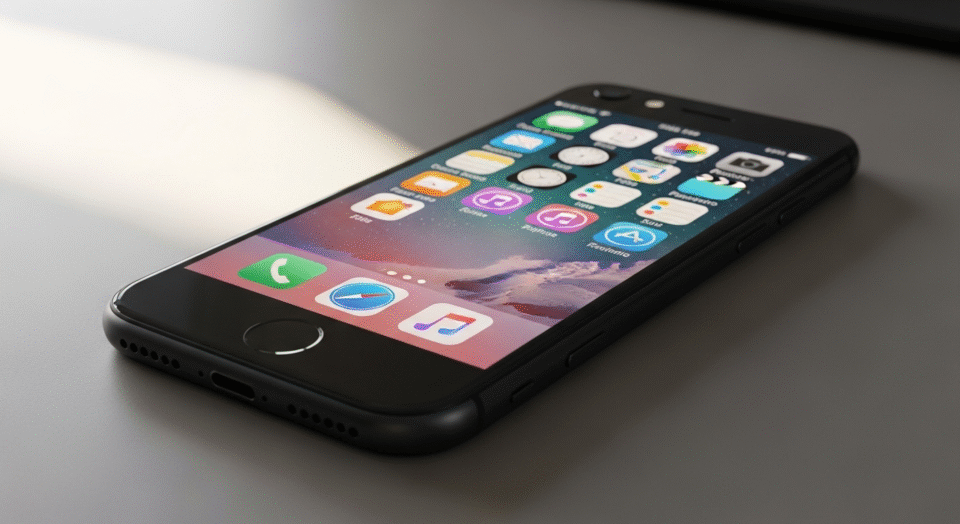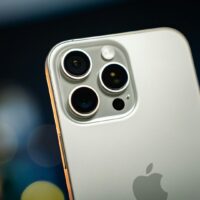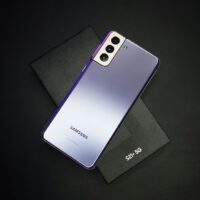
The iPhone SE 2020 remains one of the most compelling budget-friendly iPhones, offering a blend of modern performance and classic design. Released in April 2020, this device packs the powerful A13 Bionic chip, a compact 4.7-inch Retina HD display, and a 12MP rear camera—all housed in a familiar, pocket-friendly form factor reminiscent of the iPhone 8. Its combination of affordability, performance, and iOS ecosystem integration makes it a standout choice for users seeking a smaller, yet capable, iPhone.
This in-depth review explores the iPhone SE 2020’s full specifications, performance benchmarks, camera capabilities, battery life, and user experience. Whether you’re considering it as a secondary device, a budget-friendly iPhone, or a compact powerhouse, this guide provides all the verified details you need to make an informed decision.
Overview of the iPhone SE 2020
The iPhone SE 2020 is Apple’s answer to users who prefer a smaller, more affordable iPhone without compromising on performance. It retains the iconic design of the iPhone 8 but upgrades the internals with Apple’s A13 Bionic chip, the same processor found in the iPhone 11 series. This ensures the device delivers flagship-level performance in a compact package.
Key highlights of the iPhone SE 2020 include:
- 4.7-inch Retina HD display with a resolution of 1334 x 750 pixels, offering sharp visuals and True Tone technology for accurate color representation.
- A13 Bionic chip, which provides fast and efficient performance for both everyday tasks and demanding applications.
- 12MP rear camera with an f/1.8 aperture, optical image stabilization, and support for 4K video recording at up to 60 fps.
- 7MP front-facing camera with an f/2.2 aperture, capable of capturing detailed selfies and supporting 1080p HD video recording.
- Touch ID for secure and convenient biometric authentication.
- IP67 water and dust resistance, making it durable against accidental spills and exposure to dust.
- Wireless charging support, compatible with Qi-certified chargers.
- iOS 13 (upgradable to the latest iOS version), ensuring access to the latest features, security updates, and app compatibility.
The iPhone SE 2020 is available in three storage variants: 64GB, 128GB, and 256GB, catering to different user needs. Its compact size, powerful performance, and affordable price point make it an attractive option for a wide range of users.
Design and Build Quality
The iPhone SE 2020 features a design that harks back to the iPhone 8, with a glass front and back and an aluminum frame. This design is both familiar and functional, offering a comfortable grip and a premium feel. The device measures 138.4 x 67.3 x 7.3 mm and weighs 148 grams, making it one of the most compact and lightweight iPhones available.
The front of the device is dominated by the 4.7-inch Retina HD display, which is surrounded by relatively thick bezels—a design choice that accommodates the Touch ID home button. While the bezels may feel dated compared to modern edge-to-edge displays, they contribute to the device’s durability and ease of use with one hand.
The back of the iPhone SE 2020 houses the 12MP camera and the iconic Apple logo. The camera module is slightly raised, which means the device may wobble slightly when placed on a flat surface. However, this is a minor trade-off for the camera’s capabilities.
The iPhone SE 2020 is available in three colors: Black, White, and (PRODUCT)RED. Each color option features a sleek, glossy finish that enhances the device’s premium appearance. The build quality is excellent, with Ion-X strengthened glass on the front and back, providing added protection against scratches and minor drops.
Display: 4.7-Inch Retina HD
The iPhone SE 2020 features a 4.7-inch Retina HD display with a resolution of 1334 x 750 pixels and a pixel density of 326 pixels per inch (PPI). While this display may not offer the same level of immersion as the larger, bezel-less screens found on newer iPhones, it delivers sharp and vibrant visuals that are well-suited for everyday use.
The display supports True Tone technology, which automatically adjusts the white balance to match the ambient lighting. This feature reduces eye strain and provides a more natural viewing experience, particularly in varying lighting conditions. The display also supports wide color (P3), ensuring accurate and vivid color reproduction.
One of the standout features of the iPhone SE 2020’s display is its 625 nits max brightness, which ensures excellent visibility even in bright sunlight. The display also supports Haptic Touch, allowing users to access contextual menus and shortcuts by long-pressing on the screen.
While the iPhone SE 2020’s display lacks the high refresh rates and OLED technology found in more premium iPhones, it remains a solid performer for its price range. The compact size of the display also contributes to the device’s portability, making it easy to use with one hand—a feature that many users appreciate.
Performance: A13 Bionic Chip
The iPhone SE 2020 is powered by Apple’s A13 Bionic chip, the same processor used in the iPhone 11 series. This chip features a 6-core CPU (with two high-performance cores and four efficiency cores) and a 4-core GPU, delivering exceptional performance and power efficiency.
The A13 Bionic chip is built on a 7nm+ process, which allows for faster processing speeds and improved energy efficiency. This results in smooth multitasking, fast app launches, and seamless performance even when running demanding applications or games. The chip also includes an 8-core Neural Engine, which enables advanced machine learning tasks and enhances features like Face ID (on supported devices), augmented reality, and computational photography.
In benchmark tests, the A13 Bionic chip consistently outperforms many Android flagship processors, making the iPhone SE 2020 one of the fastest phones in its price range. The device handles everything from everyday tasks like web browsing and social media to more intensive activities like video editing and gaming with ease.
The A13 Bionic chip also ensures that the iPhone SE 2020 will receive software updates for years to come. Apple’s commitment to long-term software support means that users can expect to receive the latest iOS updates, security patches, and new features well into the future.
Camera: 12MP Rear and 7MP Front
The iPhone SE 2020 features a 12MP rear camera with an f/1.8 aperture, optical image stabilization (OIS), and support for 4K video recording at up to 60 fps. While it may not have the multiple lenses found on more expensive iPhones, the single-lens setup is highly capable, delivering impressive photo and video quality.
The rear camera supports features like Portrait Mode, which uses advanced computational photography to create a depth-of-field effect, blurring the background and keeping the subject in sharp focus. It also supports Portrait Lighting, which allows users to apply studio-quality lighting effects to their portraits.
For video recording, the iPhone SE 2020 supports 4K video at 24, 30, or 60 fps, as well as 1080p HD video at 30 or 60 fps. The device also includes extended dynamic range for video up to 30 fps, which helps capture more detail in high-contrast scenes.
The front-facing camera is a 7MP sensor with an f/2.2 aperture, capable of capturing detailed selfies and supporting 1080p HD video recording. It also supports Portrait Mode and Portrait Lighting, making it a great option for selfie enthusiasts.
Overall, the iPhone SE 2020’s camera system delivers excellent performance for its price range, making it a strong contender for users who prioritize photography and videography.
Battery Life and Charging
The iPhone SE 2020 is equipped with a 1,821 mAh battery, which is relatively small compared to the batteries found in larger iPhones. However, thanks to the efficiency of the A13 Bionic chip and iOS optimizations, the device offers respectable battery life for its size.
Under typical usage conditions, the iPhone SE 2020 can last a full day on a single charge, with moderate use of apps, web browsing, and media consumption. Heavy users may need to recharge before the end of the day, but the device’s compact size makes it easy to carry a portable charger if needed.
The iPhone SE 2020 supports 18W fast charging, which allows users to charge the device to 50% in about 30 minutes when using a compatible charger. It also supports Qi wireless charging, providing added convenience for users who prefer cable-free charging.
While the battery life of the iPhone SE 2020 may not match that of larger iPhones, its efficiency and fast-charging capabilities make it a practical choice for users who value portability and performance.
Software and iOS Experience
The iPhone SE 2020 launched with iOS 13 but is fully compatible with the latest iOS updates, including iOS 17. Apple’s commitment to long-term software support ensures that users will continue to receive the latest features, security updates, and performance improvements for years to come.
The device’s compact size and iOS optimizations make it incredibly easy to use with one hand, a feature that many users appreciate. The Touch ID home button provides secure and convenient biometric authentication, and the intuitive iOS interface ensures a smooth and responsive user experience.
iOS on the iPhone SE 2020 includes all the features that users have come to expect, such as Siri, Apple Pay, and seamless integration with other Apple devices. The device also supports Augmented Reality (AR) applications, thanks to the powerful A13 Bionic chip and iOS optimizations.
Overall, the iPhone SE 2020 delivers a premium iOS experience in a compact and affordable package, making it an excellent choice for users who want the full iPhone experience without the premium price tag.
Connectivity and Additional Features
The iPhone SE 2020 offers a comprehensive set of connectivity options, including:
- 4G LTE with support for Gigabit-class speeds, ensuring fast and reliable mobile data connectivity.
- Wi-Fi 6 (802.11ax), which provides faster and more efficient wireless internet connectivity.
- Bluetooth 5.0, offering improved range and stability for wireless accessories.
- NFC for contactless payments via Apple Pay and other NFC-enabled services.
- GPS, GLONASS, Galileo, and QZSS for accurate location tracking.
- Lightning connector for charging and data transfer.
The device also includes a range of sensors, such as an accelerometer, gyro, proximity sensor, compass, and barometer, which enhance its functionality and support features like fitness tracking and augmented reality.
One notable feature of the iPhone SE 2020 is its stereo speakers, which deliver clear and immersive audio for media playback, calls, and gaming. The device also supports Dolby Atmos for an enhanced audio experience when using compatible headphones or speakers.
The iPhone SE 2020 does not include a 3.5mm headphone jack, but it comes with a Lightning to 3.5mm headphone jack adapter in the box, allowing users to connect wired headphones if needed.
User Experience and Ergonomics
The iPhone SE 2020’s compact size and lightweight design make it one of the most ergonomic iPhones available. Its 4.7-inch display and narrow profile allow for comfortable one-handed use, a feature that is increasingly rare in modern smartphones.
The device’s Touch ID home button is both secure and convenient, allowing users to unlock their phone and authenticate purchases with a simple fingerprint scan. The Haptic Touch feature also enhances the user experience by providing tactile feedback for on-screen interactions.
The iPhone SE 2020’s build quality is excellent, with a combination of glass and aluminum that gives it a premium feel. The device is also IP67-rated for water and dust resistance, providing added durability and peace of mind for users.
Overall, the iPhone SE 2020 delivers a user experience that is both intuitive and enjoyable, making it a great choice for users who value simplicity, performance, and portability.
Comparison with Other iPhones
When compared to other iPhones, the iPhone SE 2020 stands out for its compact size, affordability, and powerful performance. Here’s how it stacks up against some of its siblings:
- iPhone 11: The iPhone 11 offers a larger 6.1-inch display, a dual-camera system, and a larger battery. However, it is also more expensive and less compact than the iPhone SE 2020.
- iPhone 8: The iPhone SE 2020 shares the same design as the iPhone 8 but features the more powerful A13 Bionic chip and improved camera capabilities. The iPhone SE 2020 is the clear winner in terms of performance and future-proofing.
- iPhone 12 Mini: The iPhone 12 Mini offers a more modern design with a 5.4-inch OLED display and 5G connectivity. However, it is also more expensive than the iPhone SE 2020, making the SE a more budget-friendly option.
- iPhone 13 Mini: The iPhone 13 Mini features the A15 Bionic chip, a larger battery, and a more advanced camera system. While it offers better performance and battery life, it comes at a higher price point.
The iPhone SE 2020’s combination of affordability, compact size, and powerful performance makes it a unique offering in Apple’s lineup. It is an excellent choice for users who prioritize value and portability over cutting-edge features.
Pros and Cons
Like any device, the iPhone SE 2020 has its strengths and weaknesses. Here’s a balanced look at its pros and cons:
Pros:
- Powerful A13 Bionic chip delivers flagship-level performance.
- Compact and lightweight design makes it easy to use with one hand.
- Affordable price compared to other iPhones.
- Excellent camera performance for its price range.
- Long-term software support from Apple.
- Touch ID for secure and convenient biometric authentication.
- IP67 water and dust resistance for added durability.
Cons:
- Small battery may require mid-day charging for heavy users.
- Dated design with thick bezels compared to modern iPhones.
- No 5G connectivity, which may be a drawback for future-proofing.
- Single-lens camera system lacks the versatility of multi-lens setups.
- No Night Mode for low-light photography.
Despite its drawbacks, the iPhone SE 2020 remains a highly capable and attractive option for users who value performance, affordability, and compactness.
Who Should Buy the iPhone SE 2020?
The iPhone SE 2020 is an excellent choice for several types of users:
- Budget-conscious buyers who want an affordable iPhone without sacrificing performance.
- Users who prefer compact phones that are easy to use with one hand.
- Those who prioritize longevity and want a device that will receive software updates for years to come.
- Photography enthusiasts who want a capable camera in a budget-friendly package.
- Users who value Touch ID over Face ID for biometric authentication.
- Parents or businesses looking for a reliable and affordable secondary device.
If you fall into any of these categories, the iPhone SE 2020 is well worth considering. Its combination of performance, affordability, and compactness makes it one of the best value propositions in the smartphone market.
Conclusion
The iPhone SE 2020 is a remarkable device that packs flagship-level performance into a compact and affordable package. Its A13 Bionic chip, 12MP camera, and 4.7-inch Retina HD display make it a highly capable smartphone that punches well above its weight class. While it may lack some of the cutting-edge features found in more expensive iPhones, such as 5G connectivity and a multi-lens camera system, it more than makes up for it with its performance, affordability, and portability.
For users who value a smaller form factor, long-term software support, and a powerful processor, the iPhone SE 2020 is an excellent choice. It is particularly well-suited for budget-conscious buyers, those who prefer compact phones, and anyone looking for a reliable secondary device. With its combination of performance, affordability, and iOS ecosystem integration, the iPhone SE 2020 remains one of the best value propositions in the smartphone market.
Whether you’re upgrading from an older iPhone, looking for a budget-friendly option, or simply prefer a smaller device, the iPhone SE 2020 delivers a premium iPhone experience without the premium price tag.









